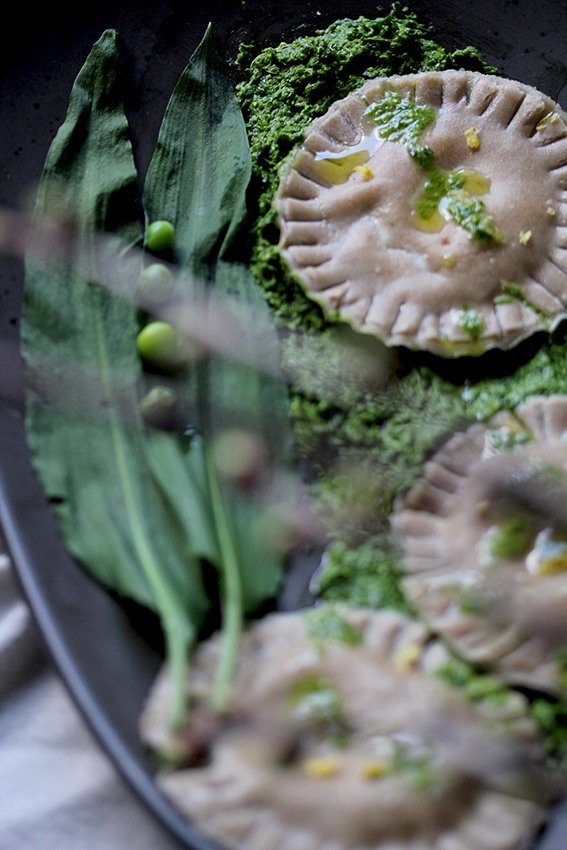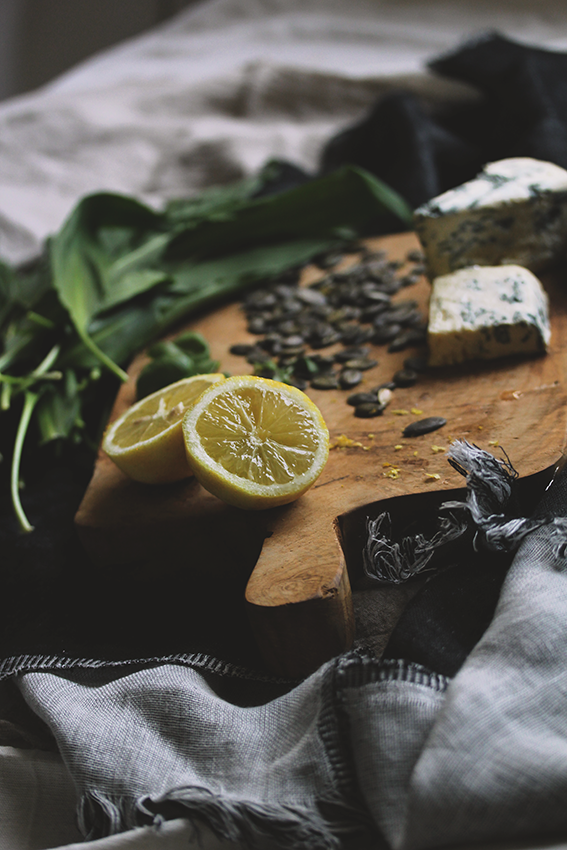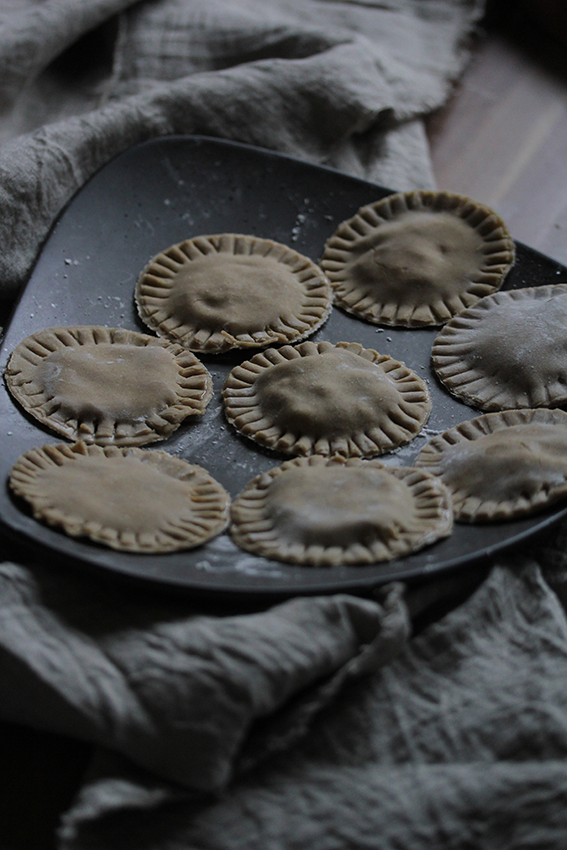Happy Easter everyone! I can’t tell you how happy I am that the spring has finally arrived. Every year I am eagerly anticipating some of the season’s products and when they finally arrive I am rushing to the kitchen to use them as much as possible (expect to see A LOT of rhubarb!). So this week it had to be wild garlic (asparagus, you will have to wait a little longer). I also made a wild garlic and walnut quiche, but then decided to make some fresh pasta for Easter. Since I discovered zucchini noodles a couple of years ago I hardly ever eat pasta, so I thought this would be something special for the holiday and it turned out beautifully. Light as the first green leaves…
This song by Melody’s Eco Chamber was my soundtrack when I was in the kitchen – perfect spring feelings!
Spring ravioli with Gorgonzola (makes about 18-20 ravioli, serves 2 as a light meal or 4 as a starter)
For the pasta dough:
200g buckwheat flour
1 egg + 2 egg yolkes
1 tbsp olive oil
1/4 tsp sea salt
2-3 tbsp water
2-3 tbsp of arrowroot starch to dust the surface (can be substituted by another starch)
For the filling:
200g Gorgonzola (or other blue cheese such as Roquefort or Stilton)
100g soft goat’s cheese
zest of 1 organic lemon
a few leaves of basil
pinch of black pepper
Ideally, start one day ahead with the pasta dough. Since there is no gluten present in buckwheat to make the dough elastic, the overnight rest helps with the consistency. But if you don’t have the time, let the dough sit for at least 30 minutes in the fridge before you start working with it. Simply place all ingredients in a bowl. Don’t throw out the egg white – you’ll need it later to seal the ravioli (add the rest to scrambled eggs or whip up a face mask). Add one tablespoon of water at a time – you can always add more if you feel that’s necessary. Knead with your hands until a smooth, yet firm ball forms. Place in the fridge (especially if you made it the night before).
To make the filling, combine the cheeses and crush together with a fork. Be generous with the lemon zest! You might even want to use a second lemon. Add pepper and torn basil leaves.
Take the dough out of the fridge and separate into two parts. Lightly dust your work surface and a rolling pin with arrowroot starch (you could use flour, but trust me: starch works sooo much better here!). I don’t own a pasta machine (which – in case you do – you should obviously use now), but I had great success with rolling the dough out very thinly. Try to get it as thin as possible. Use a cutter or the rim of glass to stamp out 6-8cm discs. To shape the ravioli, place one teaspoon of filling in the centre, brush the edges with a little egg white. Place another disc on top and press the edges together using either your fingers or a fork. Leave the ravioli on a lightly dusted tray until you are ready to proceed.
Bring salted water to the boil. Cook the pasta for about 5-7 minutes (I found that although they rise to the top rather quickly they need a little more time than other ravioli or will otherwise remain a little too al dente). Serve with the wild garlic pesto (recipe below), a drizzle of olive oil and sprinkle with some more lemon zest.
Wild garlic – pumpkin seed pesto
1 bunch (ca. 50g) wild garlic/ramson
1 bunch of basil
1 bunch of parsley
50g pumpkin seeds
juice of 1 lemon
2 tbsp olive oil
1 tbsp of pumpkin seed oil (optional)
sea salt to taste
Roast pumpkin seeds in a pan without oil. Place all ingredients in a food processor (or use an immersion blender) until a paste forms. I’ ve made the experience that it is quite easy to overdo the wild garlic and that it can become very dominant – so start slow and add more leaves according to taste (if you find it too strong, add more of the other herbs, or even some spinach or peas). Add a little water to thin the mixture if necessary, season to taste. To keep the pesto in the fridge, put it in a tightly sealed glass container an top with olive oil, which helps to prevent spoilage.
PS: I’ ve also shared this recipe over at food52




